- Gynostemma: The Expert Guide to Cultivation, Properties, and Species
- Introduction
- Cultivation
- Properties
- Species
- Conclusion
- Overview of Gynostemma
- Key Properties of Gynostemma
- Common Uses of Gynostemma
- Conclusion
- Cultivating Gynostemma
- Introduction
- Choosing the Right Location
- Planting Gynostemma
- Caring for Gynostemma
- Harvesting Gynostemma
- Conclusion
- Properties and Benefits of Gynostemma
- 1. Antioxidant-rich
- 2. Anti-inflammatory
- 3. Immune-boosting
- 4. Cardiovascular health
- 5. Weight management
- 6. Anti-aging
- 7. Anti-cancer
- 8. Adaptogenic properties
- 9. Digestive health
- 10. Anti-diabetic
- Varieties and Species of Gynostemma
- Gynostemma pentaphyllum
- Gynostemma longipes
- Gynostemma laxiflorum
- Gynostemma compressum
- Gynostemma amplexicaule
- Medicinal Uses of Gynostemma
- 1. Antioxidant properties
- 2. Immune system support
- 3. Anti-inflammatory effects
- 4. Stress reduction
- 5. Cardiovascular health
- 6. Anti-cancer properties
- 7. Weight management
- 8. Liver support
- 9. Anti-aging effects
- Gynostemma in Traditional Medicine
- Health Benefits
- Usage in Traditional Medicine
- Caution
- Gynostemma Tea: Brewing and Serving
- Ingredients:
- Instructions:
- Serving:
- Benefits:
- Gynostemma: A Superfood for Health and Wellness
- Benefits of Gynostemma
- How to Incorporate Gynostemma into Your Diet
- Conclusion
- Questions and Answers:
- What is gynostemma?
- What are the properties of gynostemma?
- How is gynostemma cultivated?
- Are there different species of gynostemma?
- What are the benefits of consuming gynostemma?
- How can gynostemma be used in cooking or recipes?
- Where can gynostemma be purchased?
- Videos: Gynostemma Tea, An Energizing Herbal Adaptogen
Welcome to our expert guide on Gynostemma! Gynostemma, also known as jiaogulan, is a versatile plant in the Cucurbitaceae family. It is native to the mountains of southern China, where it has long been used in traditional Chinese medicine for its wide range of health benefits.
Gynostemma is an easy plant to cultivate and has gained popularity in recent years for its adaptogenic properties and potential as a natural remedy for various ailments. It is a climbing vine that can reach a height of up to 6 meters and has heart-shaped leaves. The plant produces small, green flowers and red fruits that resemble small pumpkins.
One of the most remarkable properties of Gynostemma is its high content of saponins, which are natural compounds known for their antioxidant and anti-inflammatory effects. These saponins are believed to contribute to the plant’s many health benefits, including boosting the immune system, improving cardiovascular health, and reducing stress and fatigue.
Gynostemma can be consumed in various forms, including as a tea, extract, or supplement. It is often brewed into a herbal tea known as “miracle tea” due to its potential anti-aging and longevity-promoting effects. The tea has a slightly sweet and bitter taste, similar to green tea, and can be enjoyed hot or cold.
Gynostemma: The Expert Guide to Cultivation, Properties, and Species
Introduction
Gynostemma is a plant that belongs to the cucumber family, Cucurbitaceae. It is native to several countries in Asia, including China, Japan, and Korea. Gynostemma is often referred to as “southern ginseng” due to its similarities to ginseng in terms of health benefits.
Cultivation
Gynostemma can be cultivated both in the wild and in controlled environments. It is a climbing vine that thrives in warm and humid climates, making it suitable for cultivation in tropical and subtropical regions. Here are some key points to consider when cultivating gynostemma:
- Choose a well-draining soil with a pH level between 5.5 and 7.5.
- Provide support structures for the vines to climb, such as trellises or bamboo poles.
- Water the plants regularly, keeping the soil moist but not waterlogged.
- Apply organic fertilizers to promote healthy growth.
- Protect the plants from extreme temperatures and strong winds.
- Harvest the leaves when they are young and tender for the best flavor and nutritional content.
Properties
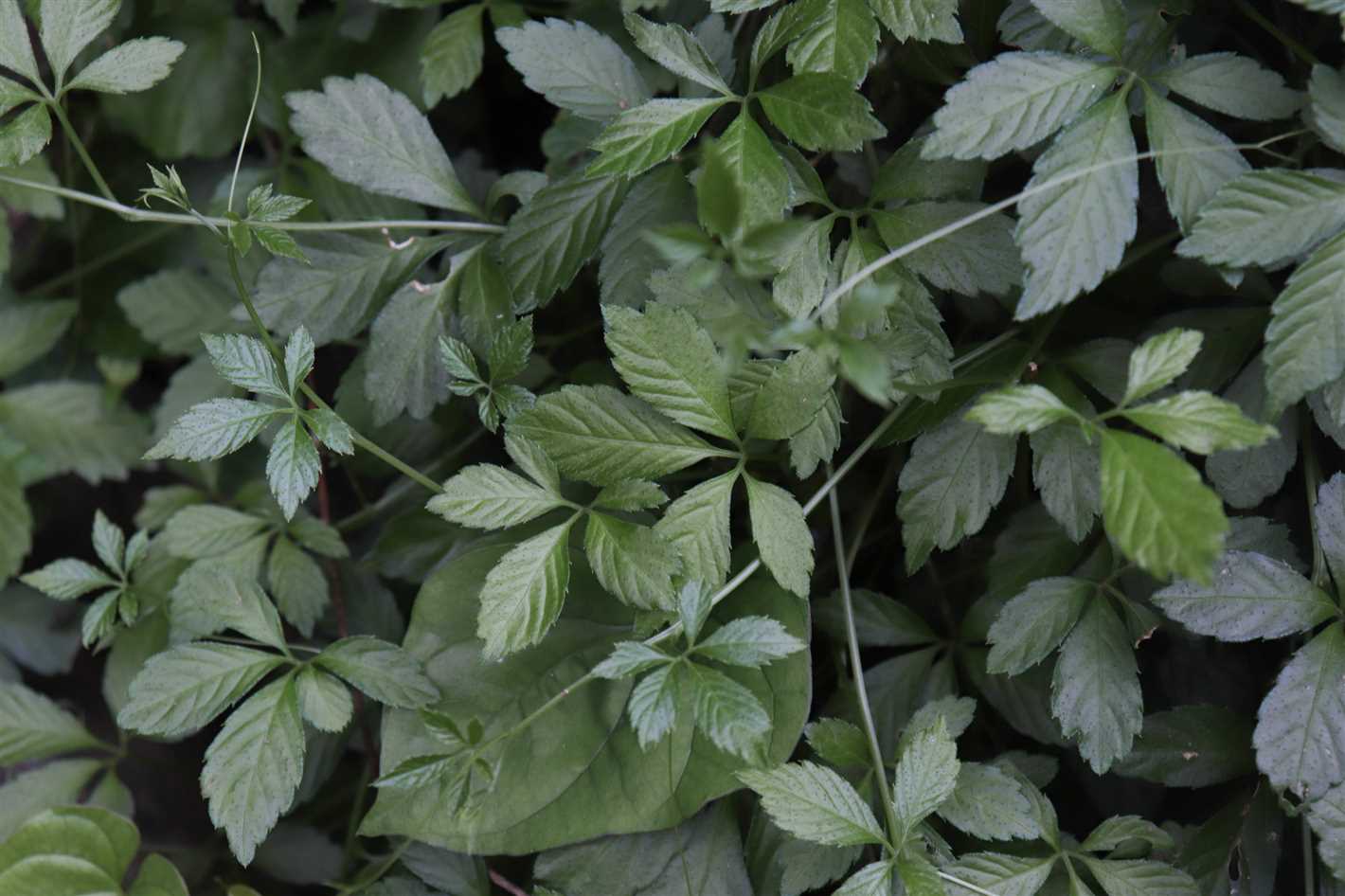
Gynostemma leaves are rich in various bioactive compounds, including saponins, flavonoids, and polysaccharides. These compounds contribute to the plant’s numerous health benefits:
- Antioxidant properties: Gynostemma contains high levels of antioxidants, which help protect the body against free radicals and oxidative stress.
- Immune system support: The polysaccharides present in gynostemma can enhance the immune system’s response, improving overall health and well-being.
- Anti-inflammatory effects: Gynostemma has been found to possess anti-inflammatory properties, making it beneficial for individuals with inflammatory conditions.
- Cardiovascular health: Regular consumption of gynostemma may help maintain healthy blood pressure and cholesterol levels, reducing the risk of cardiovascular diseases.
- Adaptogenic properties: Gynostemma is considered an adaptogen, meaning it can help the body adapt to stress and promote overall balance and resilience.
Species
There are several species of gynostemma, but the most commonly cultivated ones are:
- Gynostemma pentaphyllum: Also known as “jiaogulan” in Chinese, this species is the most widely grown and studied. It is valued for its adaptogenic properties and is often used in traditional medicine.
- Gynostemma laxiflorum: This species is native to Japan and is often used as an ornamental plant. Its leaves have a slightly different chemical composition compared to Gynostemma pentaphyllum.
Conclusion
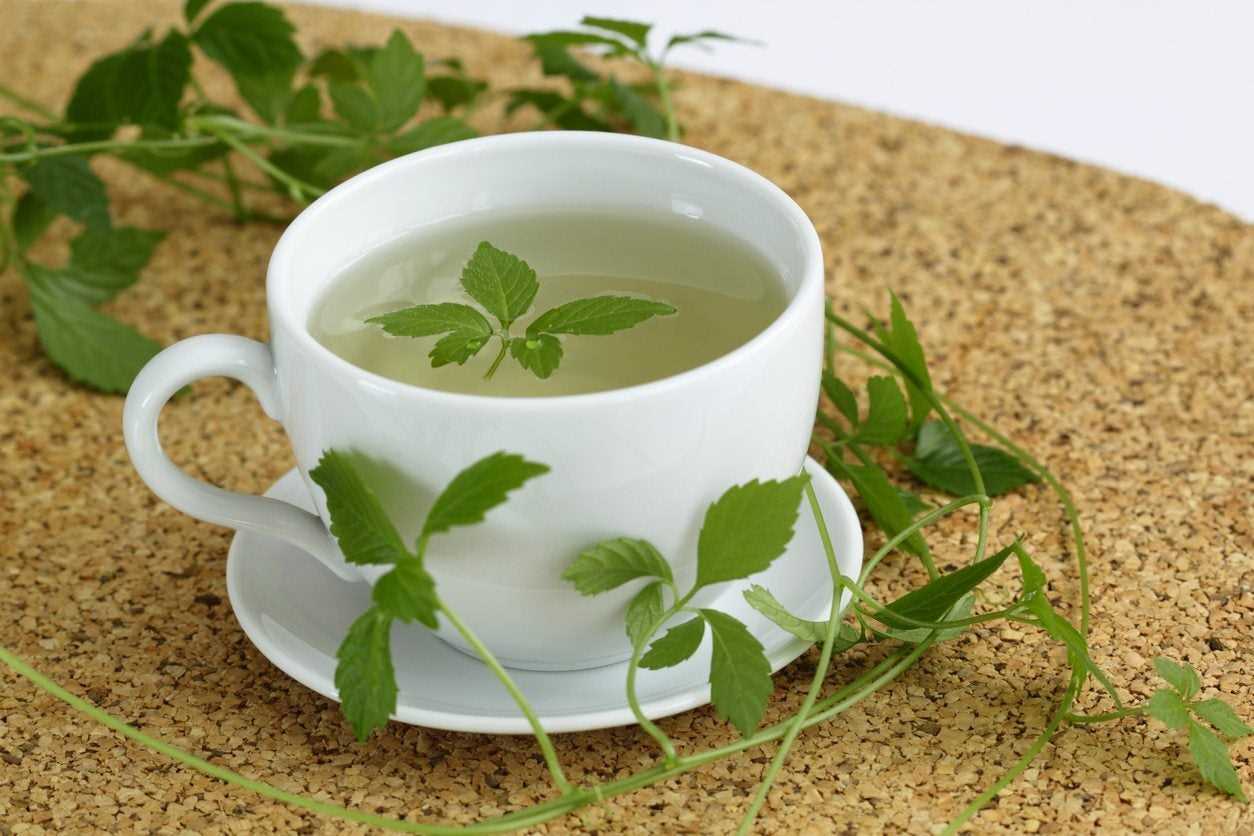
Gynostemma is a versatile plant that offers numerous health benefits and can be cultivated in various regions. Whether you choose to grow it for personal use or for commercial purposes, understanding its cultivation methods, properties, and different species can help you make the most of this remarkable plant.
Overview of Gynostemma
Gynostemma is a climbing vine that belongs to the family Cucurbitaceae. It is native to East Asia, particularly China, Vietnam, and Japan. Gynostemma is also known by other names such as Jiaogulan, Southern Ginseng, and Miracle Grass.
Gynostemma has been used in traditional Chinese medicine for centuries due to its numerous health benefits. It is often referred to as an adaptogen, which means it helps the body adapt to stress and promotes overall well-being.
There are several species of Gynostemma, with Gynostemma pentaphyllum being the most well-known and widely studied. This species is rich in bioactive compounds such as saponins, flavonoids, and polysaccharides, which contribute to its medicinal properties.
Key Properties of Gynostemma
- Adaptogenic: Gynostemma helps the body cope with physical and mental stress. It supports the adrenal glands and promotes balance in the body’s stress response.
- Antioxidant: Gynostemma is rich in antioxidant compounds, which help protect the body’s cells from damage caused by free radicals.
- Anti-inflammatory: Gynostemma has anti-inflammatory properties that can help reduce inflammation in the body and alleviate symptoms of various inflammatory conditions.
- Immune-modulating: Gynostemma supports a healthy immune system by regulating immune function and enhancing immune response against pathogens.
- Cardioprotective: Gynostemma has been shown to have positive effects on cardiovascular health. It may help lower blood pressure, reduce cholesterol levels, and improve blood flow.
- Anticancer: Some studies suggest that Gynostemma may have anticancer properties, including inhibiting the growth of cancer cells and inducing apoptosis (cell death) in certain types of cancer.
Common Uses of Gynostemma
Gynostemma is commonly consumed as a tea or in the form of extracts, capsules, or powders. It is often used for the following purposes:
- Boosting energy and stamina
- Improving digestion and promoting weight loss
- Enhancing mental clarity and focus
- Supporting cardiovascular health
- Managing stress and promoting relaxation
- Boosting immune function
Conclusion
Gynostemma is a versatile herb with a wide range of potential health benefits. Its adaptogenic, antioxidant, anti-inflammatory, immune-modulating, cardioprotective, and anticancer properties make it a valuable addition to any wellness routine. However, it is important to consult with a healthcare professional before starting any new herbal regimen to ensure its safety and appropriateness for individual needs.
Cultivating Gynostemma
Introduction
Gynostemma, also known as the “miracle herb,” is a perennial vine native to the mountainous regions of China and Southeast Asia. It has gained popularity in recent years due to its numerous health benefits and adaptogenic properties. Cultivating Gynostemma can be a rewarding experience, as it allows you to have a fresh source of this incredible herb right in your own garden.
Choosing the Right Location
Gynostemma thrives in well-drained soil and prefers a partially shaded area. It can tolerate a wide range of soil types, but it does best in soil that is slightly acidic. Before planting, make sure to clear the area of any weeds or debris and amend the soil if necessary.
Planting Gynostemma
Gynostemma can be grown from seeds or cuttings. If you choose to grow from seeds, start by soaking them in water for 24 hours to improve germination rates. After soaking, plant the seeds about 1/4 inch deep in the prepared soil. Keep the soil moist but not waterlogged during the germination process, which can take up to two weeks.
If you prefer to use cuttings, make sure to select healthy stems from an established Gynostemma plant. Cut the stems at a 45-degree angle and remove any leaves from the lower half of the stem. Dip the cut end of the stem in rooting hormone and plant it in the prepared soil. Keep the soil damp until the cutting establishes roots, which usually takes around two to four weeks.
Caring for Gynostemma
Gynostemma is a fast-growing vine that requires regular care to ensure optimal growth. Here are some key care tips:
- Water: Gynostemma requires regular watering, especially during dry spells. However, avoid overwatering, as it can lead to root rot. Aim to keep the soil evenly moist.
- Fertilization: Gynostemma benefits from regular fertilization. Use a balanced fertilizer once a month during the growing season to promote healthy growth.
- Pruning: Prune Gynostemma regularly to promote bushier growth and control its spread. Cut back any dead or damaged stems, and trim it to the desired shape and size.
Harvesting Gynostemma
The leaves of Gynostemma can be harvested once the plant is established and has reached a height of at least 6 inches. Harvesting should be done in the morning when the leaves are at their freshest. You can pluck individual leaves or cut the stems near the base of the plant.
Drying the harvested leaves is essential to preserve their medicinal properties. Spread the leaves in a single layer on a drying rack or a clean cloth in a well-ventilated area away from direct sunlight. Allow the leaves to dry completely, which can take up to two weeks depending on the climate.
Conclusion
Cultivating Gynostemma can be a fulfilling experience that allows you to have a constant supply of this incredible herb. By choosing the right location, planting properly, and providing regular care, you can ensure the healthy growth of your Gynostemma plant and enjoy its numerous health benefits for years to come.
Properties and Benefits of Gynostemma
1. Antioxidant-rich
Gynostemma contains a high amount of antioxidants, which help protect the body against oxidative stress and damage caused by harmful free radicals. These antioxidants help prevent the development of chronic diseases and promote overall health and well-being.
2. Anti-inflammatory
Gynostemma has anti-inflammatory properties, which can help reduce inflammation in the body. Chronic inflammation is linked to various diseases, including heart disease, diabetes, and cancer. By incorporating Gynostemma into your diet, you may be able to protect against these conditions by reducing inflammation.
3. Immune-boosting
Consuming Gynostemma may help boost the immune system, making it more effective at fighting off infections and diseases. It can stimulate the production of white blood cells and enhance the activity of the immune system, helping to improve overall health.
4. Cardiovascular health
Gynostemma has been shown to have positive effects on cardiovascular health. It can help lower cholesterol levels, reduce blood pressure, and improve blood circulation. These benefits can help reduce the risk of heart disease and strokes.
5. Weight management
Gynostemma may aid in weight management by increasing metabolism and promoting fat burning. It can also help regulate blood sugar levels and reduce appetite, making it easier to maintain a healthy weight.
6. Anti-aging
Due to its antioxidant properties, Gynostemma may have anti-aging effects. It can help prevent the formation of wrinkles and fine lines by protecting the skin from damage caused by free radicals. Additionally, Gynostemma can improve skin elasticity and promote a youthful appearance.
7. Anti-cancer
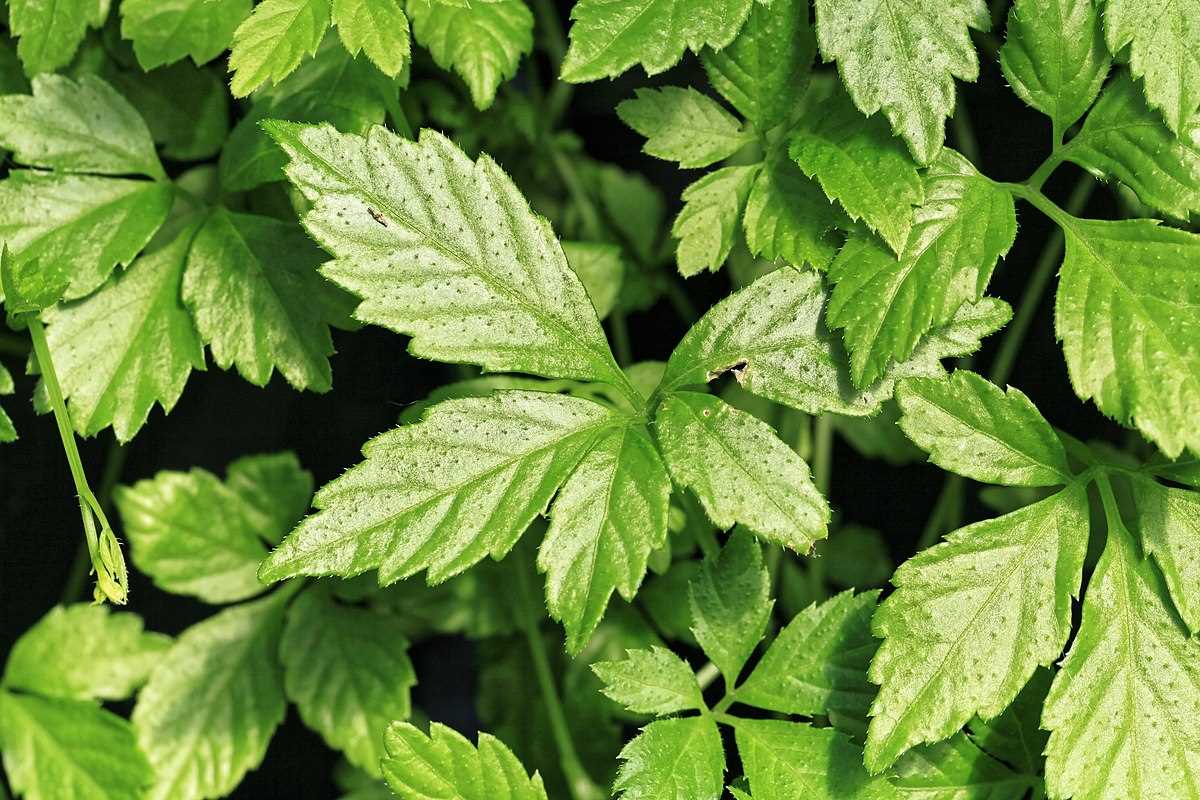
Some studies suggest that Gynostemma may have anti-cancer properties. It has been shown to inhibit the growth of cancer cells and induce apoptosis (cell death) in certain types of cancer. However, more research is needed to fully understand its potential as an anti-cancer agent.
8. Adaptogenic properties
Gynostemma is considered an adaptogen, which means it can help the body cope with stress and promote overall balance and well-being. It can improve energy levels, reduce fatigue, and enhance mental clarity and focus.
9. Digestive health
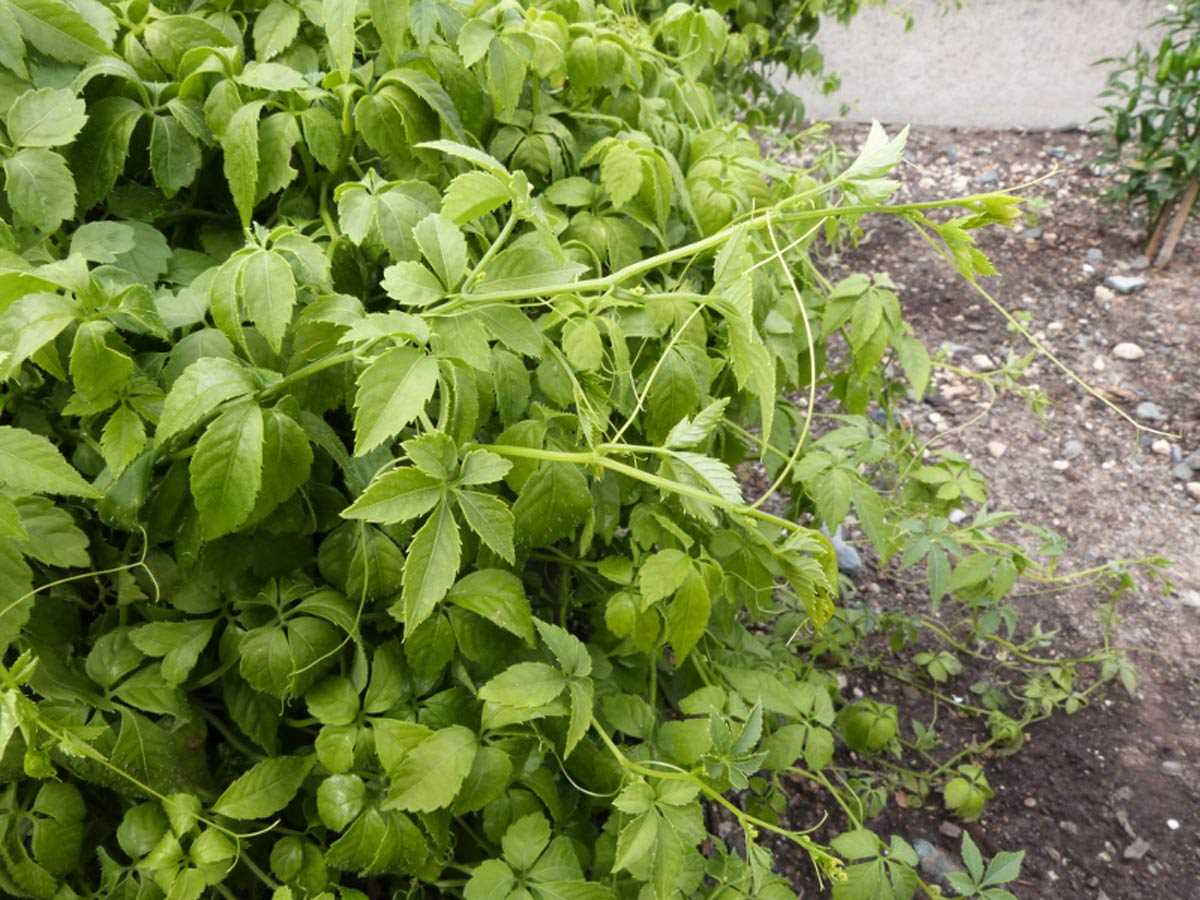
Gynostemma has been used in traditional medicine to support digestive health. It can help regulate bowel movements, relieve constipation, and promote overall digestive function.
10. Anti-diabetic
Some research suggests that Gynostemma may have anti-diabetic effects. It can help regulate blood sugar levels and improve insulin sensitivity. This can be beneficial for individuals with diabetes or those at risk of developing the condition.
| Property/Benefit | Description |
|---|---|
| Antioxidant-rich | Protects against oxidative stress and free radicals |
| Anti-inflammatory | Reduces inflammation in the body |
| Immune-boosting | Enhances the immune system |
| Cardiovascular health | Improves heart health and circulation |
| Weight management | Aids in weight loss and appetite control |
| Anti-aging | Prevents skin aging and improves elasticity |
| Anti-cancer | Inhibits cancer cell growth |
| Adaptogenic properties | Helps the body cope with stress |
| Digestive health | Supports overall digestive function |
| Anti-diabetic | Regulates blood sugar levels |
Varieties and Species of Gynostemma
Gynostemma is a genus of flowering plants in the cucumber family, Cucurbitaceae. There are several species and varieties of Gynostemma, each with its own unique characteristics and properties. Below are some of the most popular varieties:
Gynostemma pentaphyllum
Also known as “Jiaogulan” or “Southern Ginseng,” Gynostemma pentaphyllum is the most widely recognized and studied species of Gynostemma. It is native to Southern China and has a long history of use in traditional Chinese medicine. Gynostemma pentaphyllum is known for its adaptogenic properties, meaning it helps the body adapt and resist stress. It is also rich in antioxidants and is believed to support cardiovascular health and immune function.
Gynostemma longipes
Gynostemma longipes is a species native to Vietnam and Thailand. It is characterized by its long petioles and large, lobed leaves. This species is less widely known compared to Gynostemma pentaphyllum but is also considered to have similar health benefits.
Gynostemma laxiflorum
Gynostemma laxiflorum is a species found in China, Laos, and Vietnam. It is known for its laxative properties and is often used to treat constipation and promote healthy digestion. This species is also believed to have antioxidant and anti-inflammatory effects.
Gynostemma compressum
Gynostemma compressum is a species native to China. It is characterized by its compressed fruits and is often used in traditional medicine for its diuretic properties. This species is also believed to have antihypertensive effects, helping to regulate blood pressure.
Gynostemma amplexicaule
Gynostemma amplexicaule is a species found in China and Vietnam. It is characterized by its clasping stem leaves. This species is traditionally used to treat heat-related illnesses and is believed to have cooling and detoxifying effects on the body.
These are just a few examples of the different varieties and species of Gynostemma. Each species has its own unique set of properties and traditional uses, and further research is being conducted to explore their potential benefits.
Medicinal Uses of Gynostemma
Gynostemma is a medicinal plant that has been used for centuries in traditional Chinese medicine. It is known for its numerous health benefits and is often referred to as the “immortality herb” due to its potential longevity-enhancing effects.
1. Antioxidant properties
Gynostemma is rich in antioxidant compounds, such as gypenosides, which help protect the body against free radicals. Free radicals can damage cells and contribute to various health conditions, including heart disease, cancer, and aging. Consuming Gynostemma can help reduce oxidative stress and boost overall health.
2. Immune system support
Gynostemma is believed to enhance immune system function by stimulating the production of immune cells and regulating their activity. It can help strengthen the immune system and improve the body’s ability to fight off infections and diseases.
3. Anti-inflammatory effects
Gynostemma has been shown to possess anti-inflammatory properties, which can help reduce inflammation in the body. Chronic inflammation is associated with a wide range of health conditions, including arthritis, obesity, and cardiovascular disease. Consuming Gynostemma can help alleviate inflammation and promote better overall health.
4. Stress reduction
Gynostemma is known for its adaptogenic properties, which means it helps the body adapt to stress and reduce stress-related symptoms. It can help regulate cortisol levels, the hormone responsible for the body’s stress response, and promote a sense of calm and relaxation.
5. Cardiovascular health
Gynostemma has shown potential benefits for cardiovascular health. It may help lower blood pressure, reduce cholesterol levels, and prevent the formation of blood clots. These effects can contribute to a lower risk of heart disease and stroke.
6. Anti-cancer properties
Research suggests that Gynostemma may have anti-cancer properties and could help inhibit the growth and spread of cancer cells. It may also help enhance the effectiveness of cancer treatments.
7. Weight management
Gynostemma has been studied for its potential effects on weight management. It may help reduce body weight, suppress appetite, and increase fat metabolism. These effects can be beneficial for individuals looking to lose weight or maintain a healthy weight.
8. Liver support
Gynostemma is considered beneficial for liver health. It may help protect the liver against damage, improve liver function, and assist in detoxification processes.
9. Anti-aging effects
Due to its antioxidant properties and potential effects on longevity, Gynostemma is often regarded as an herb with anti-aging benefits. It is believed to promote healthy aging and enhance overall vitality.
It’s important to note that while Gynostemma has been used for centuries in traditional medicine, more research is needed to fully understand its medicinal properties and dosage recommendations. It is advisable to consult with a healthcare professional before using Gynostemma for any specific health condition or as part of a treatment plan.
Gynostemma in Traditional Medicine
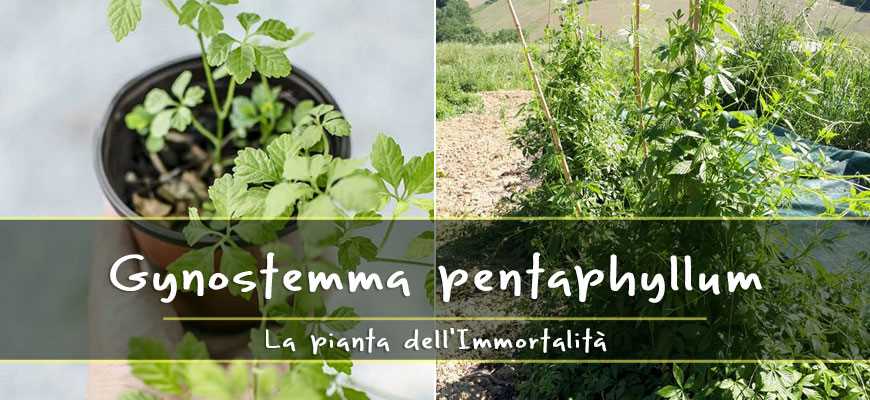
Gynostemma is a traditional herb that has a long history of use in various forms of traditional medicine, particularly in Asia. It has been used for centuries in Chinese medicine, where it is known as “Jiaogulan”.
Health Benefits
- Antioxidant Properties: Gynostemma is considered a powerful antioxidant, meaning it helps protect the body against damage caused by harmful free radicals.
- Immune System Support: Gynostemma is believed to boost the immune system, helping the body fight off infections and disease.
- Stress Relief: Gynostemma is thought to have calming properties and is often used to help reduce stress and anxiety.
- Cardiovascular Health: Some studies suggest that gynostemma may help lower cholesterol levels and improve cardiovascular health.
- Anti-inflammatory Effects: Gynostemma has been used to reduce inflammation in the body, potentially providing relief for conditions such as arthritis and asthma.
Usage in Traditional Medicine
In traditional medicine, gynostemma is often consumed as a tea or infusion. It can also be taken in capsule or powder form. The dosage and method of administration can vary depending on the specific ailment being treated.
Gynostemma is believed to have adaptogenic properties, meaning it helps the body adapt to stress and maintain balanced physiological functions. It is often used to promote longevity and enhance overall well-being.
Caution
While gynostemma is generally considered safe for most people, it is important to consult with a healthcare professional before beginning any new herbal supplement, especially if you have any underlying health conditions or are taking other medications.
It is also worth noting that gynostemma may interact with certain medications, such as blood thinners, so it is important to be aware of any potential drug interactions.
| Common Name | Gynostemma |
|---|---|
| Latin Name | Gynostemma pentaphyllum |
| Family | Cucurbitaceae |
| Origin | China, Vietnam, Korea, Japan |
Gynostemma Tea: Brewing and Serving
One of the most popular ways to consume gynostemma is by brewing it into a delicious and healthy tea. Here is a step-by-step guide on how to brew and serve gynostemma tea:
Ingredients:
- 1 teaspoon of dried gynostemma leaves
- 8 ounces of water
- Optional: honey or lemon for added flavor
Instructions:
- Bring the water to a boil in a pot or kettle.
- Add the dried gynostemma leaves to a teapot or cup.
- Pour the boiling water over the gynostemma leaves.
- Cover the teapot or cup and let the gynostemma leaves steep for about 5-7 minutes.
- Strain the tea into a new teapot or cup to remove the leaves.
- Add honey or lemon if desired for additional flavor.
Serving:
Gynostemma tea can be enjoyed hot or cold, depending on your preference. Here are a few ways to serve gynostemma tea:
- Hot Tea: Pour the brewed tea into a mug and enjoy it while it’s still hot. You can drink it as is or add sweeteners like honey or sugar to enhance the taste.
- Iced Tea: Let the brewed tea cool down to room temperature before pouring it over ice cubes. You can also add a slice of lemon or a sprig of mint for a refreshing twist.
- Smoothie: Use the brewed gynostemma tea as a base for a healthy smoothie. Blend it with fruits, yogurt, and ice for a nutritious and energizing drink.
Benefits:
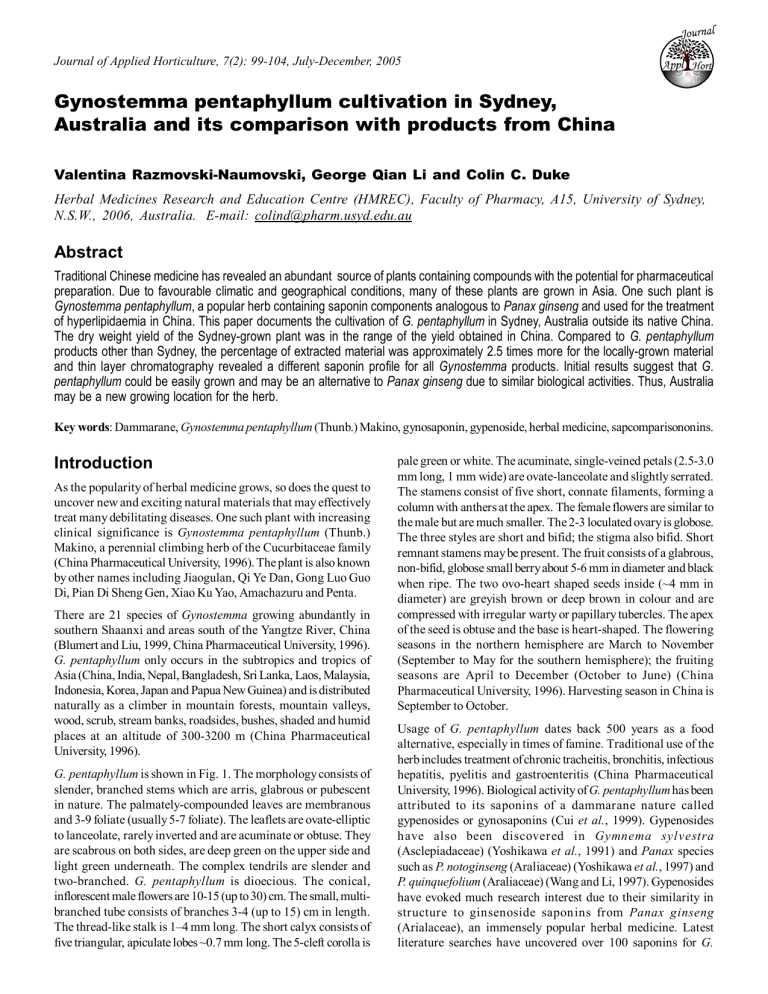
Gynostemma tea is known for its numerous health benefits. It is a rich source of antioxidants, which can help boost the immune system and fight against free radicals. Regular consumption of gynostemma tea may also contribute to lower cholesterol levels, promote weight loss, and improve digestion. However, it’s important to remember that individual results may vary, and it’s always best to consult with a healthcare professional before making any significant changes to your diet.
Gynostemma: A Superfood for Health and Wellness
Gynostemma, also known as Jiaogulan, is a plant native to China and other Asian countries. It has been used for centuries in traditional Chinese medicine due to its numerous health benefits. Gynostemma is often referred to as a “superfood” because it is packed with nutrients and antioxidants that promote overall health and wellness.
Benefits of Gynostemma
Gynostemma contains a variety of compounds that contribute to its health-promoting properties. One of the key benefits of Gynostemma is its ability to act as an adaptogen, helping the body adapt to stress and promoting overall balance. This makes it beneficial for managing stress, improving mood, and enhancing mental clarity.
Additionally, Gynostemma has been found to have anti-inflammatory properties, which can help reduce inflammation in the body and support a healthy immune system. It also has antioxidant properties, which can protect the body against damage from free radicals and oxidative stress.
Gynostemma supports cardiovascular health by helping to regulate blood pressure and cholesterol levels. It has been shown to improve blood circulation and lower LDL cholesterol, reducing the risk of heart disease.
How to Incorporate Gynostemma into Your Diet
Gynostemma can be consumed in various forms, including tea, capsules, and powdered supplements. Gynostemma tea is a popular choice and can be made by steeping dried Gynostemma leaves in hot water. The tea has a mild, slightly sweet taste and can be enjoyed on its own or mixed with other herbal teas.
If you prefer capsules or powdered supplements, make sure to follow the recommended dosage instructions provided by the manufacturer. Gynostemma can also be added to smoothies, juices, or baked goods for an added health boost.
Conclusion
Gynostemma is a powerful plant with numerous health benefits. Whether you choose to consume it as a tea, capsule, or powdered supplement, incorporating Gynostemma into your diet can support overall health and wellness. As with any supplement, it’s important to consult with a healthcare professional before adding Gynostemma to your routine, especially if you have any medical conditions or are taking medication.
Questions and Answers:
What is gynostemma?
Gynostemma, also known as Jiaogulan, is a plant native to China and other parts of Asia. It is a member of the cucumber family and is known for its medicinal properties.
What are the properties of gynostemma?
Gynostemma has a wide range of properties, including antioxidant, adaptogenic, anti-inflammatory, and immune-boosting effects. It is also known to support cardiovascular health and improve digestion.
How is gynostemma cultivated?
Gynostemma can be cultivated in various ways, including seeding, transplanting, and layering. It requires a warm and humid environment with well-drained soil. It can also be grown in containers.
Are there different species of gynostemma?
Yes, there are several species of gynostemma, with Gynostemma pentaphyllum being the most commonly used one. Other species include Gynostemma longipes and Gynostemma laxum.
What are the benefits of consuming gynostemma?
Consuming gynostemma can have a variety of benefits, such as improved energy levels, reduced stress and anxiety, enhanced immune function, and better overall health. It is also known to have anti-aging properties.
How can gynostemma be used in cooking or recipes?
Gynostemma leaves can be used in cooking to make teas, soups, and stir-fry dishes. It can also be added to smoothies or used as a salad ingredient. Additionally, gynostemma extract is available in supplement form.
Where can gynostemma be purchased?
Gynostemma products can be purchased from various health food stores, herbal shops, and online retailers. It is important to ensure that the product is of high quality and sourced from a reputable supplier.







